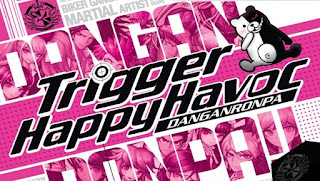Blendo Games - 2012 - PC
I just finished Thirty Flights of Loving and I'm not sure what I just played. I do know that it's a roughly 10-15 minute experience telling a story about spies... carrying out a heist? ...I think? What I do know is that it was created by Brendon Chung, the one-man team behind Blendo Games who is also responsible for Flotilla, Atom Zombie Smasher and the upcoming Quadrilateral Cowboy. Thirty Flights of Loving (TFOL) was created as part of a Kickstarter campaign to support the Idle Thumbs podcast, of which I am a frequent listener. According to Chung, TFOL was an excercise in creating a game that tells a story without any dialogue. TFOL is certinaly a realization of that concept, but I don't think it's very successful in telling a clear and understandable story
Part of the problem here is that in order to get the whole picture of what's going on in TFOL, you had to have played some of Chung's previous games. TFOL opens by announcing that it's the sequel to a game called Gravity Bone, which is jarring to anyone (myself included) who wasn't aware of Gravity Bone and was expecting TFOL to be a standalone experience. I found TFOL to be a pretty hard and confusing game to parse through. Part of it is the lack of any dialogue, part of it is the smash cuts and non-linear presentation of the story, and part of it is the expectation that the audience has also played Gravity Bone. By doing a bit of research and also watching an excellent video by Errant Signal, I was able to find out that Gravity Bone is part of Chung's long running series of games called "Citizen Abel". Now I'm not sure if playing all of the other Citizen Abel games helps TFOL make more sense, but that's a lot to expect your audience to do espiecially considering some of the older Citizen Abel games are Quake II and Half Life II mods. And if having played those games doesn't contribute anything to the understanding of TFOL, why brand it as the sequel to Gravity Bone? I acknowledge that some my confusion with the story may be my own fault for not having played the other games, but this was one of several nits I had to pick with this game.
As I mentioned earlier, the story in TFOL is told non-linearly and without any dialogue at all. As you might guess, it makes the story a bit hard to follow. Even though I played through the game twice to try to piece it together, I still can't come up with a reading on this game that isn't jumbled nonsense. I'd love to hear someone else's interpretation of the story though, if someone can actually manage to follow it and come up with an understanding.
Summary
I'm all for smaller games made for a specific audience, so I feel bad picking on the little guy here. Nevertheless, I found TFOL to be a short and confusing experiment in weird and nonsensical storytelling. I've now written quite a few words about a game that has none.






